30th April - 6th May
Partner Company: Bittersuite
Brief: Re-design the acoustic properties of a physical space
Group: Ula Rodakowska, Sebastian Ervi, Kate Chernysheva
Partner Company: Bittersuite
Brief: Re-design the acoustic properties of a physical space
Group: Ula Rodakowska, Sebastian Ervi, Kate Chernysheva
SOUND MIRRORS
This week we moved from desk research into the exploration stage. Following John's advice, we decided to look into sound mirrors which is a device that is used to reflect sound waves. We found this concept very interesting and decided to visit a replica of sound mirrors in Kew in London to experiment and get some inspiration from it. We spent some time there experimenting with different sounds, frequencies and our own voices to achieve the reflection. As a result, we managed to find certain sounds and angles at which to direct those sounds into the mirror that worked best. However, the sounds were never as clear as we could hear them normally. To get a better understanding of our experience and the concept of these mirrors we took some time to do the Artifact Analysis to help us.

It took us a while to find it because we didn't have a specific address,
but eventually, after looking very closely at the map
we managed to spot it. GIF made by Ula.
but eventually, after looking very closely at the map
we managed to spot it. GIF made by Ula.

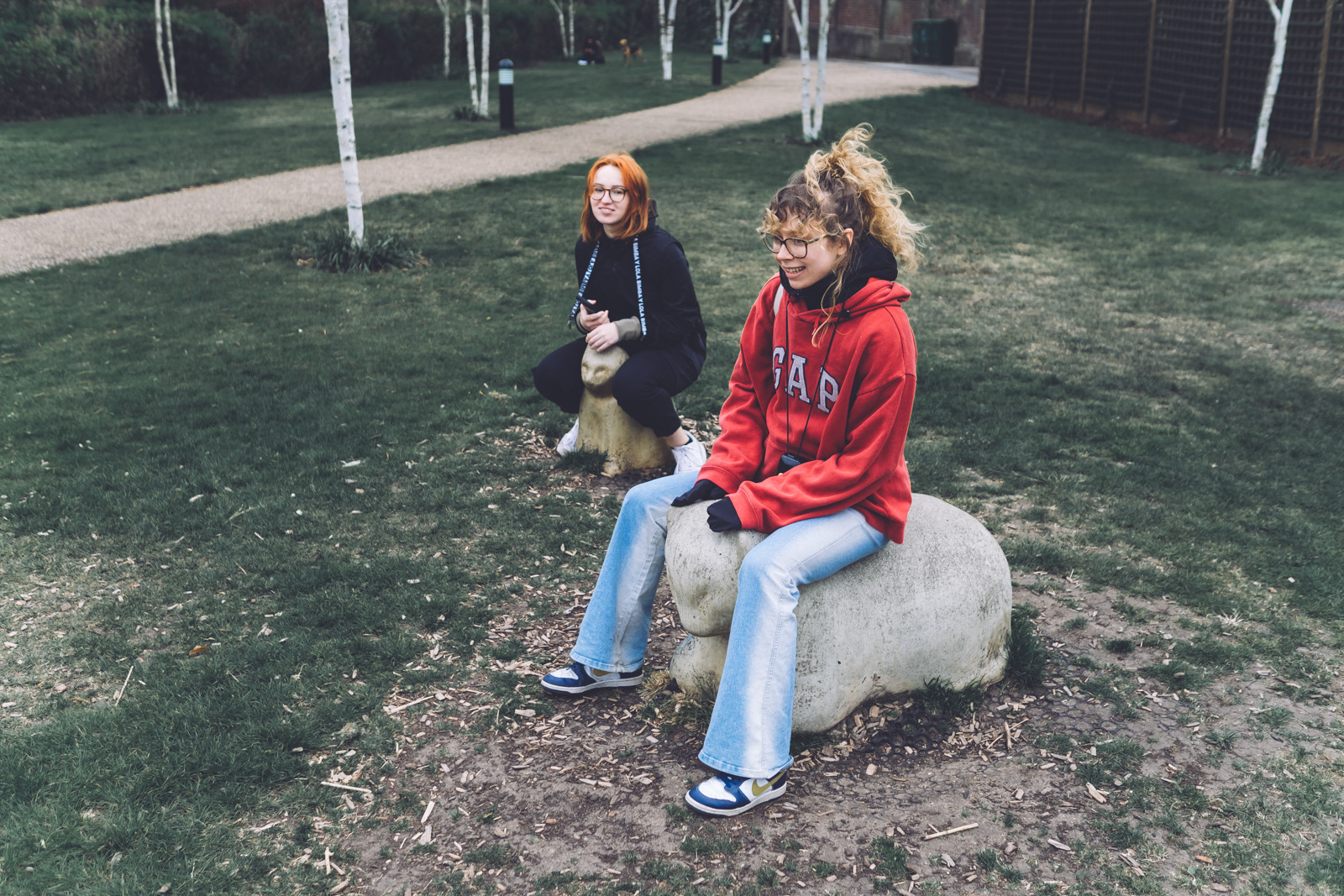

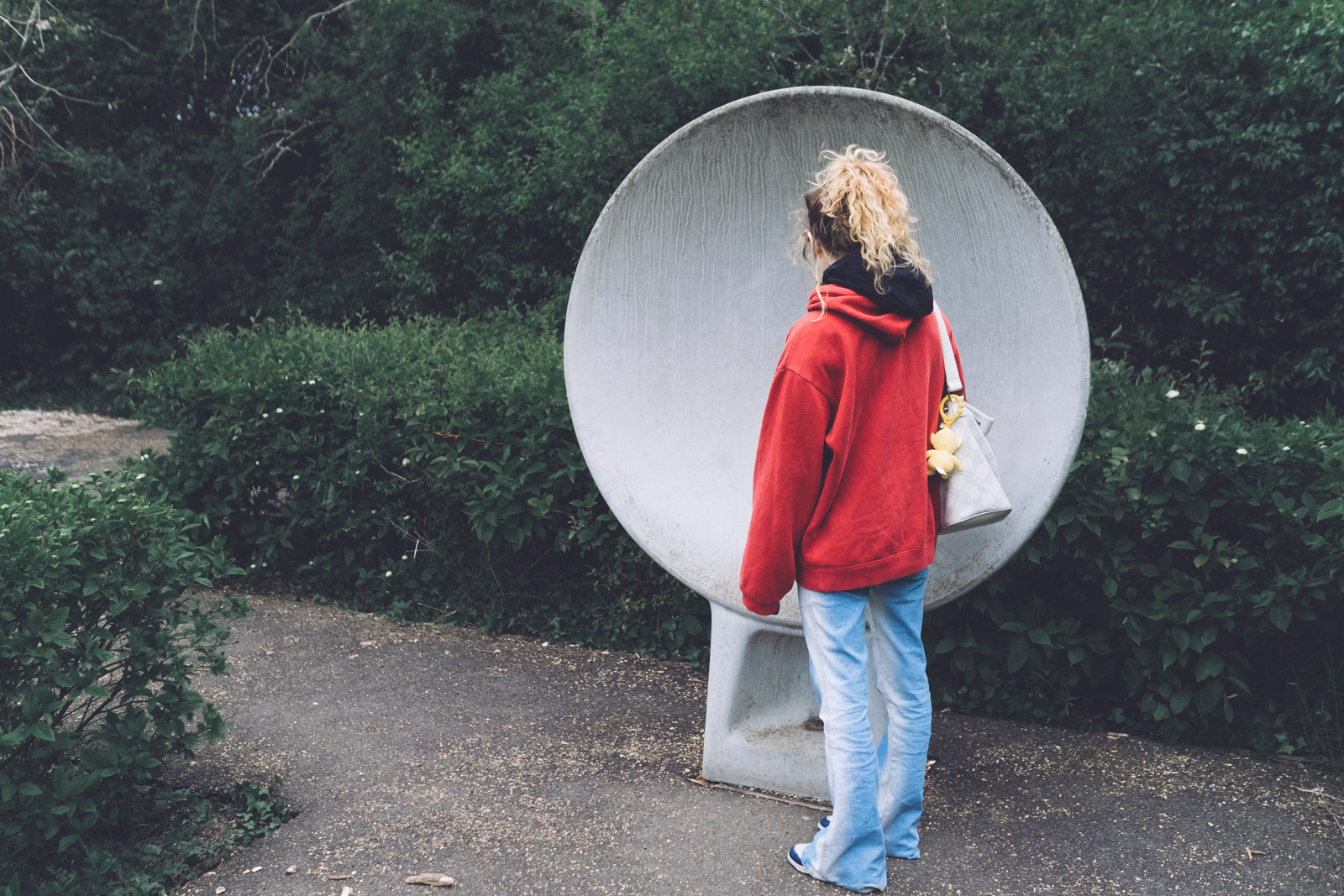
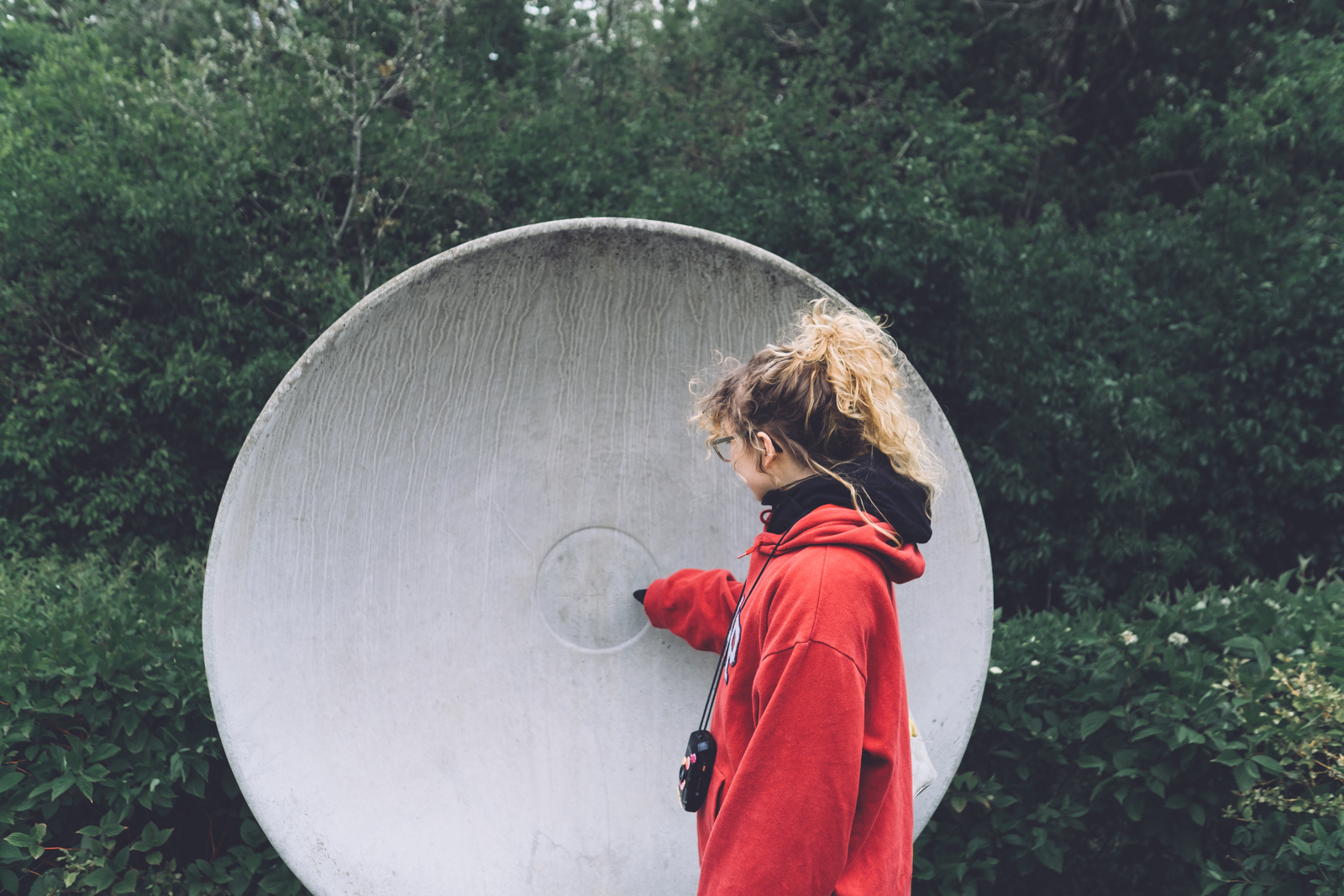
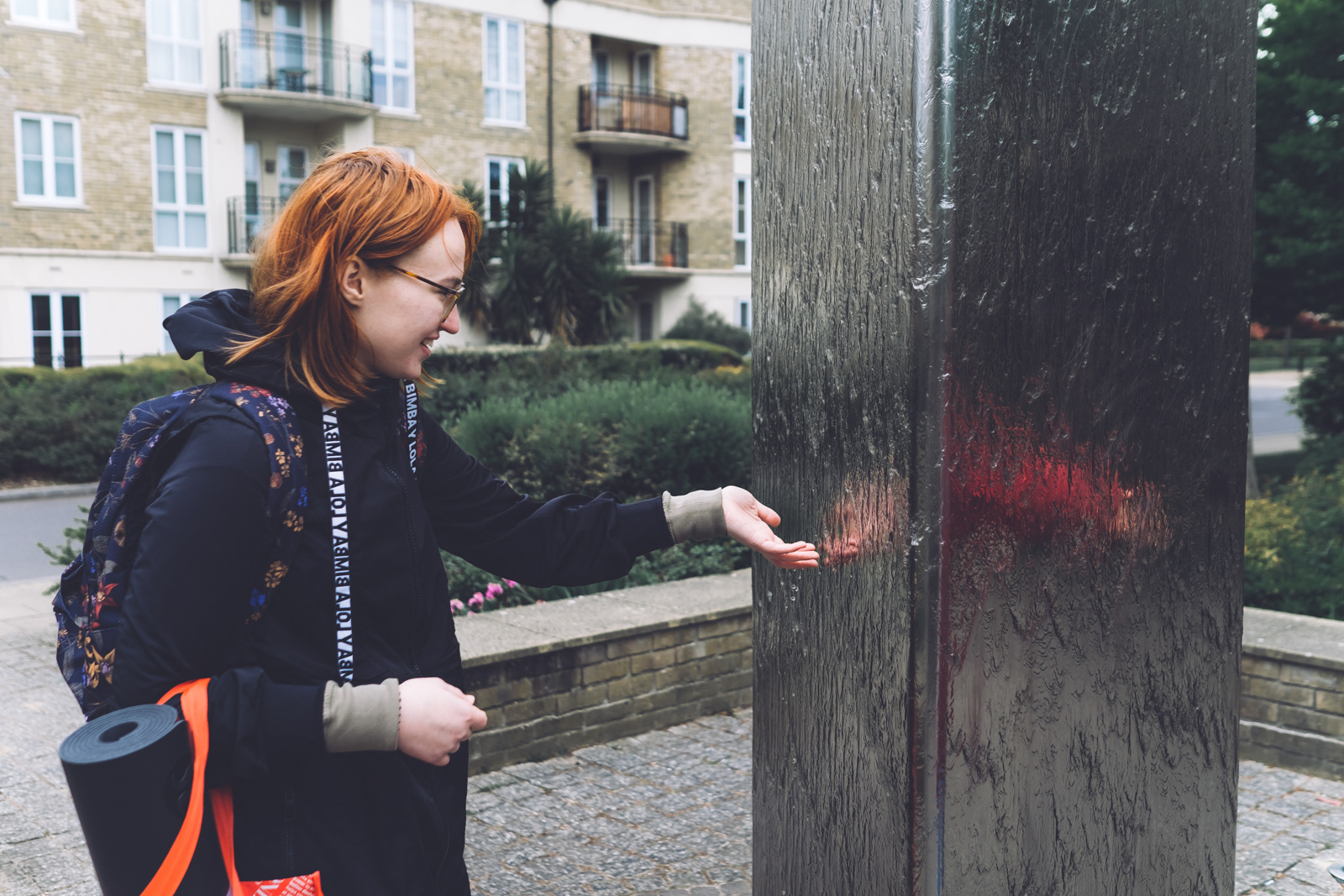
Exploring Kew and Sound Mirrors. Photos by Sebastian.
ARTIFACT & micro spaces ANALYSIS
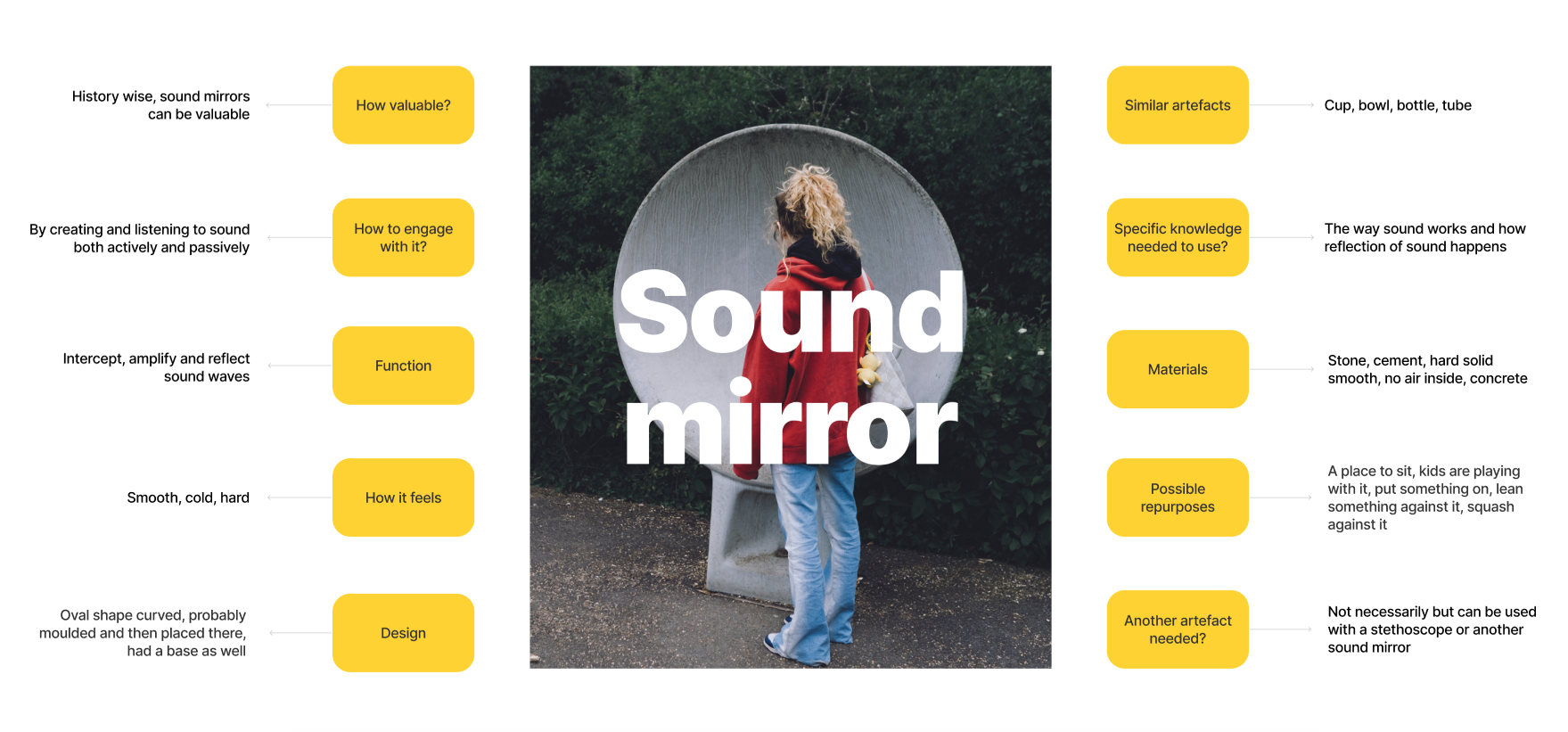
Artifact analysis produced collaboratively. Diagram made by Sebastian.
Unfortunately, this didn't lead us anywhere but we learnt more about its history and purpose. Furthermore, it inspired us to do some analysis of different micro spaces and their acoustic properties. We had a brainstorm altogether about what spaces could be interesting from that perspective and divided them between us to analyse. I was very interested in exploring the tunnel and the acoustics of self. While the tunnel was more or less straightforward to me, I had a lot of questions about analysing the acoustics of self. I spent some time being very attentive to my body and the way I think, what I hear inside my head and how. This led me to some very interesting revelations about myself and I found it to be quite useful.



The results of our analysis of micro spaces developed collaboratively.



The tunnel I did my research in along with some data I analysed about my activity, heartbeat, etc. Photo and screenshots by Kate.
MEETING WITH STEPH
At this point we all had some questions about the brief and Bittersuite, so we decided it would be great to organise a meeting with Steph. We had the opportunity to ask her about Bittersuite's target audience, the process of how the experiences are created, etc. This gave us a better understanding of their work and what they do which later led me to an important realisation.
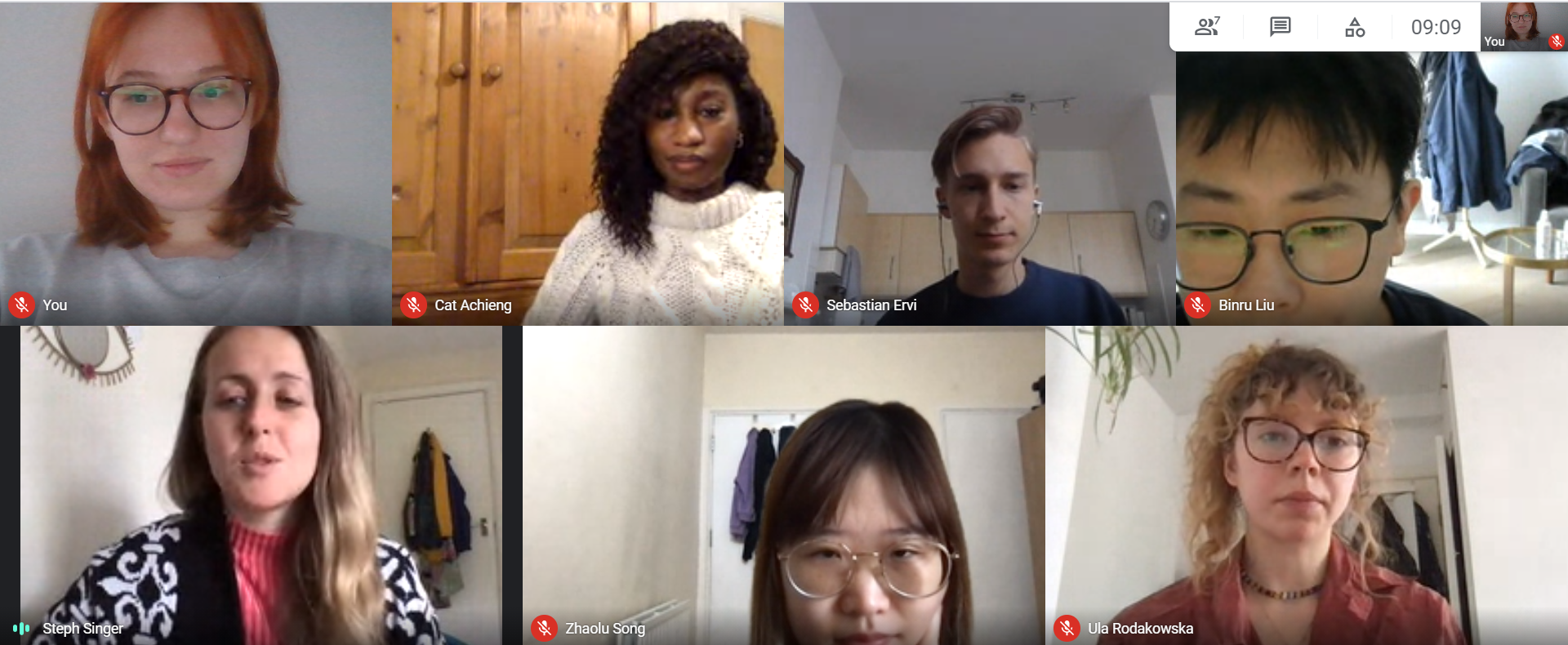
Meeting with Steph. Screenshot by Kate.

Steph has also shared with us an interesting concept about the 7 different states of tension.
Image taken from a online source.
Image taken from a online source.
EXPERIMENTATIONS
This week we also wanted to do something about each of our previously chosen directions which were spatial awareness and sound, storytelling through sound and sensory feedback. We gathered a lot of different things together such as a hairdryer, nail polish, perfume, chilli oil, etc. We wanted to play with anything that could trigger our senses in any way. We also analysed our emotional responses and feelings from certain songs or sounds we played and managed to borrow Bare Conductive from CTL to experiment. As a result, we went through a lot of different processes and managed to explore different senses and technologies. However, we still felt like something was lacking and it wasn't getting us closer to creating an experience that could stand out and change the acoustic properties of physical space.




Our recorded emotional responses to different songs we played. Developed collaboratively.
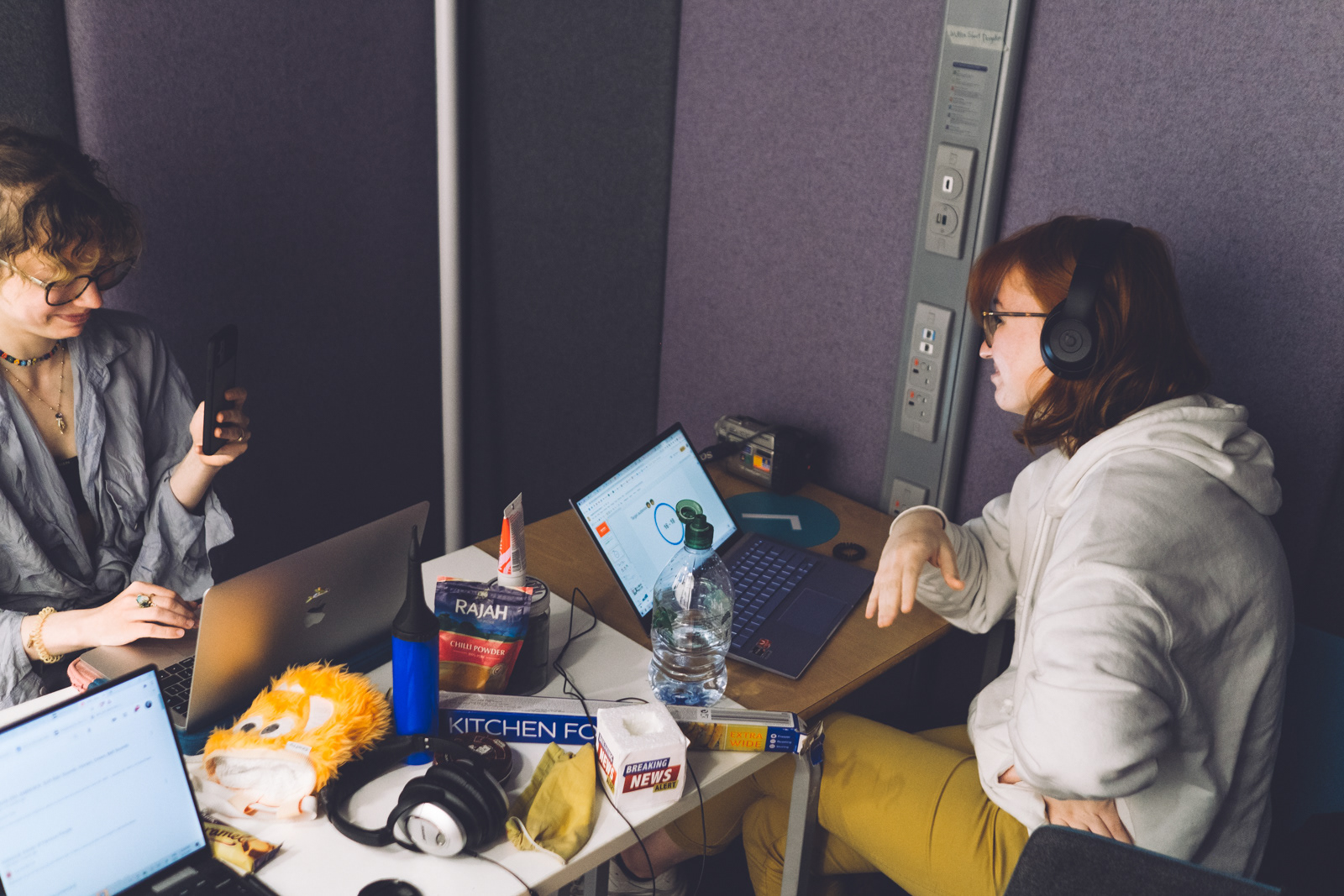
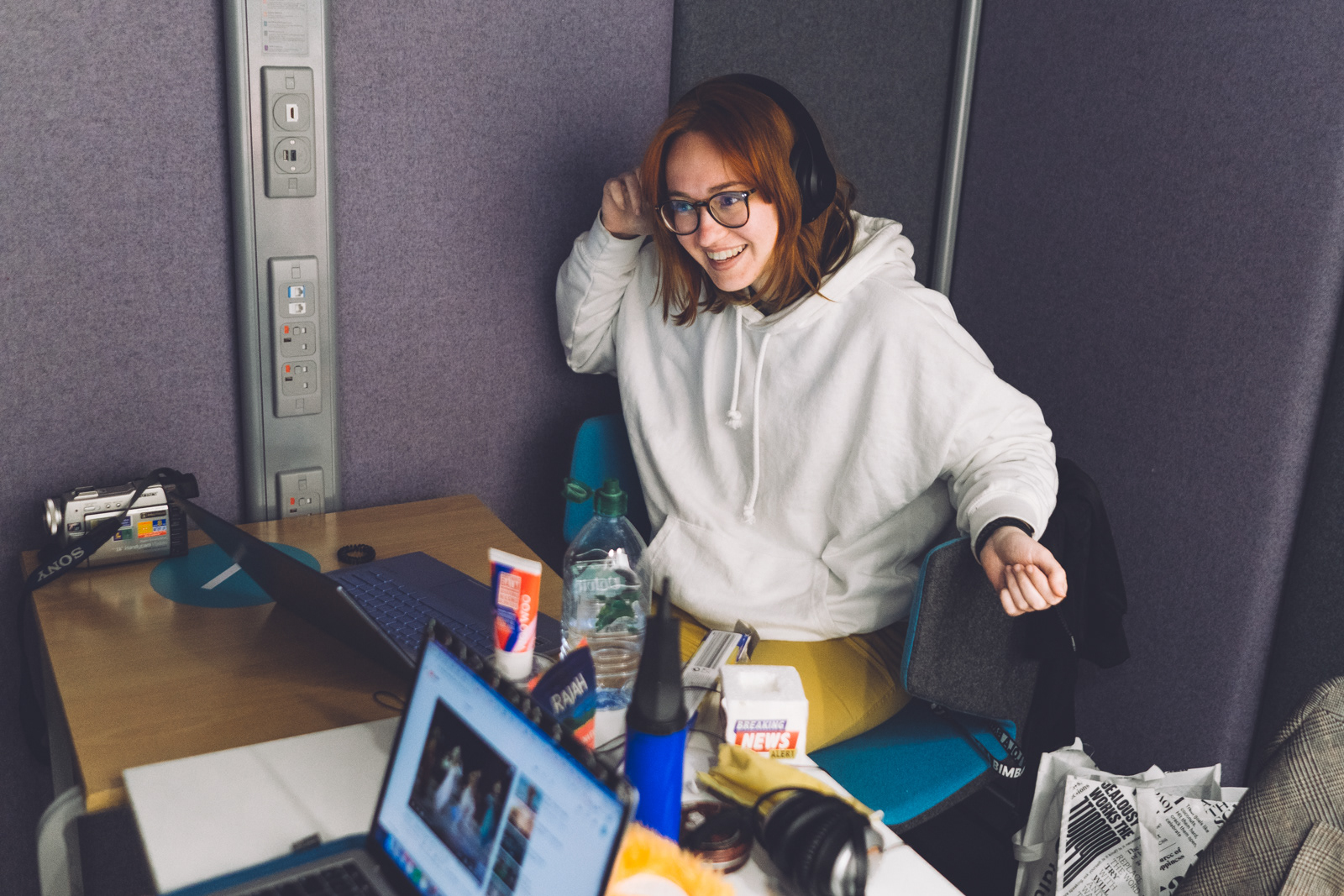
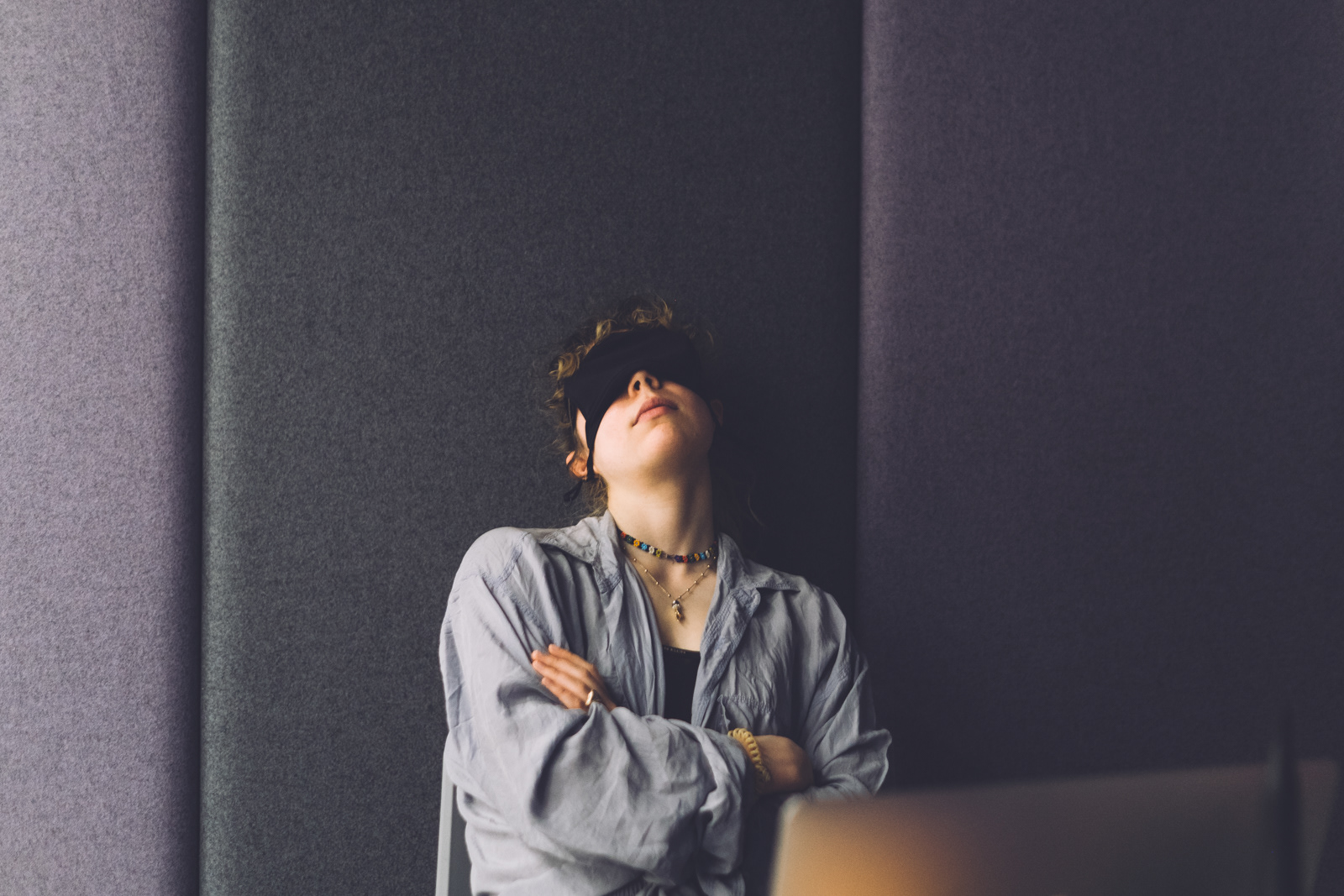
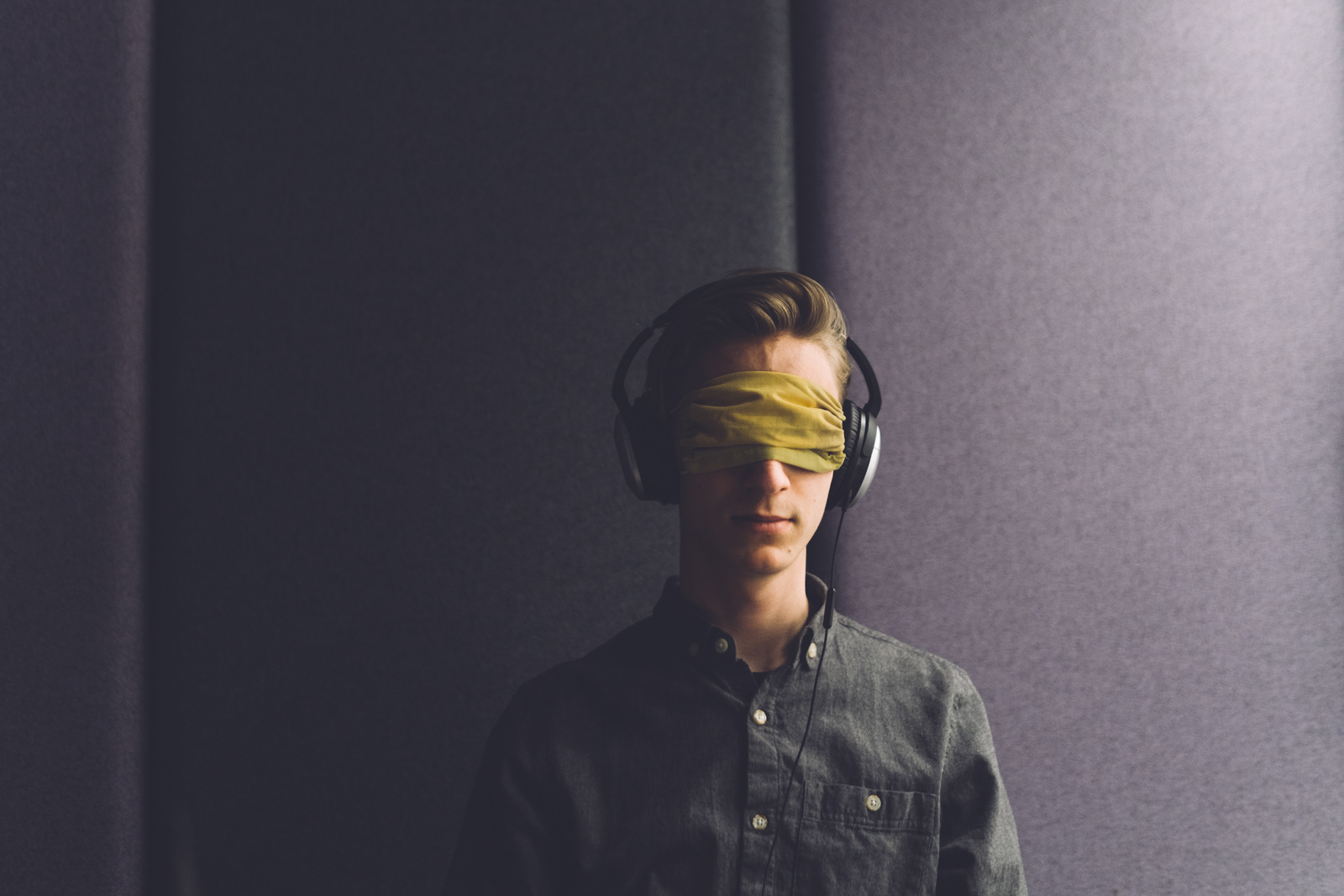
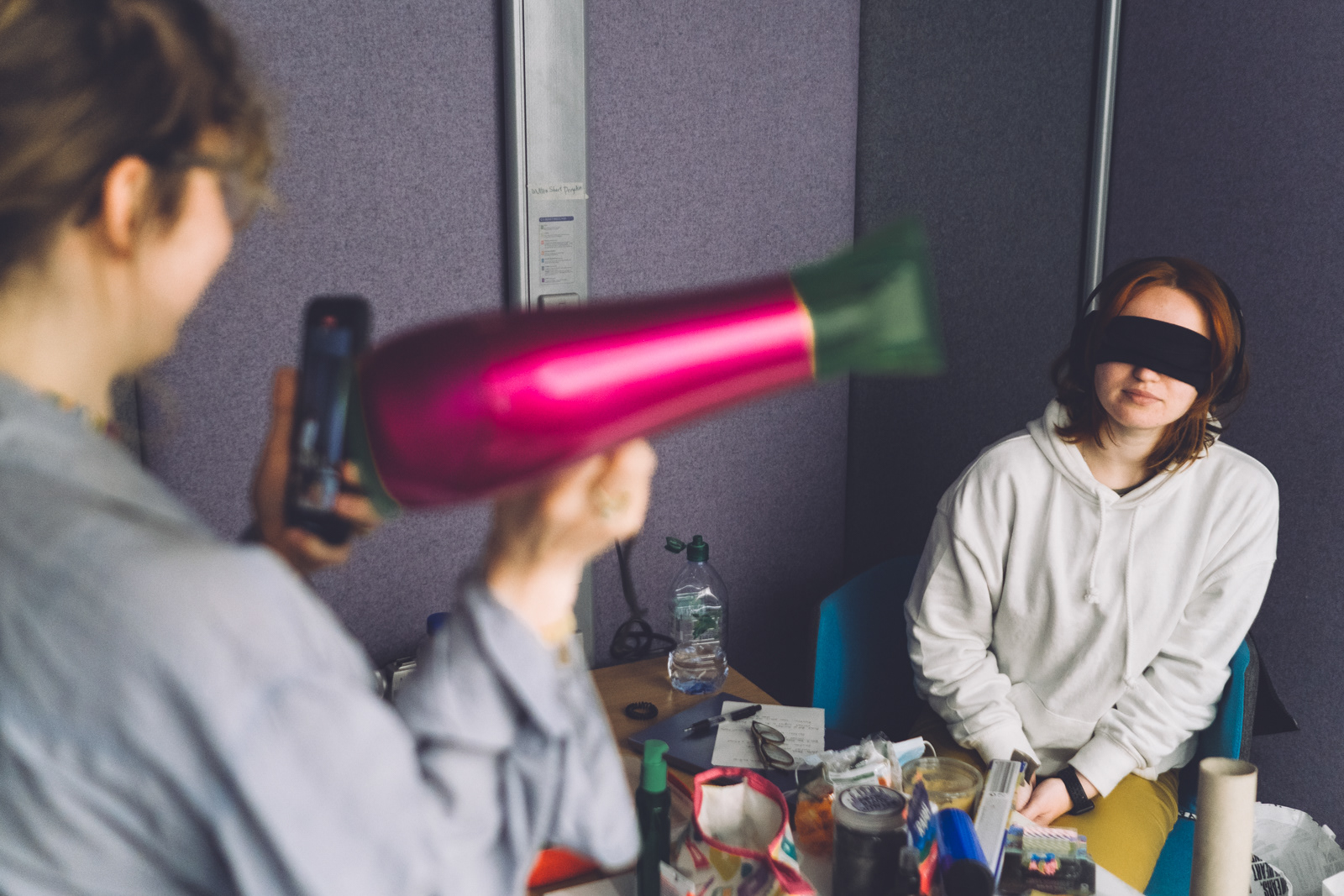

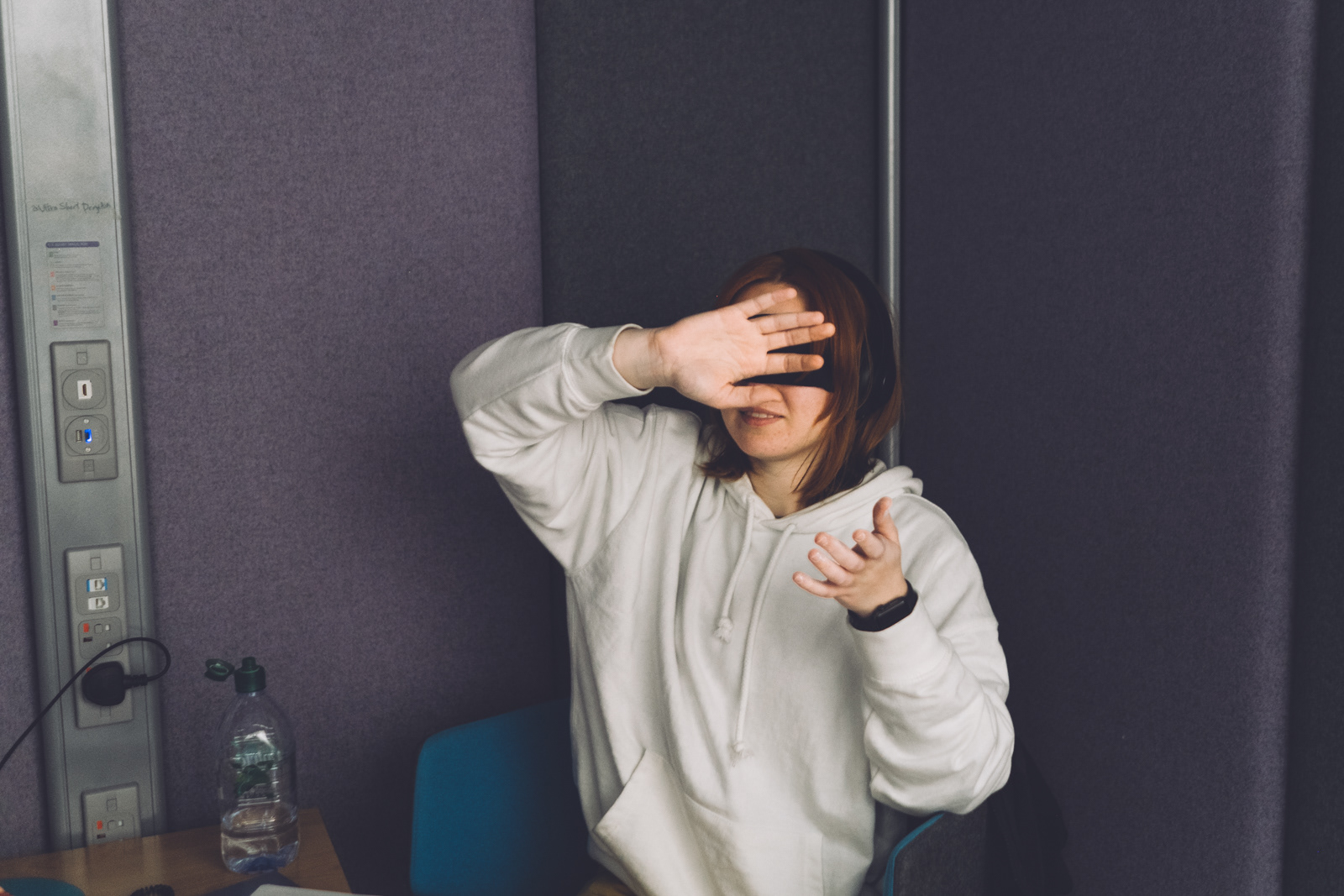


Photos from our experiments. Taken by Sebastian.
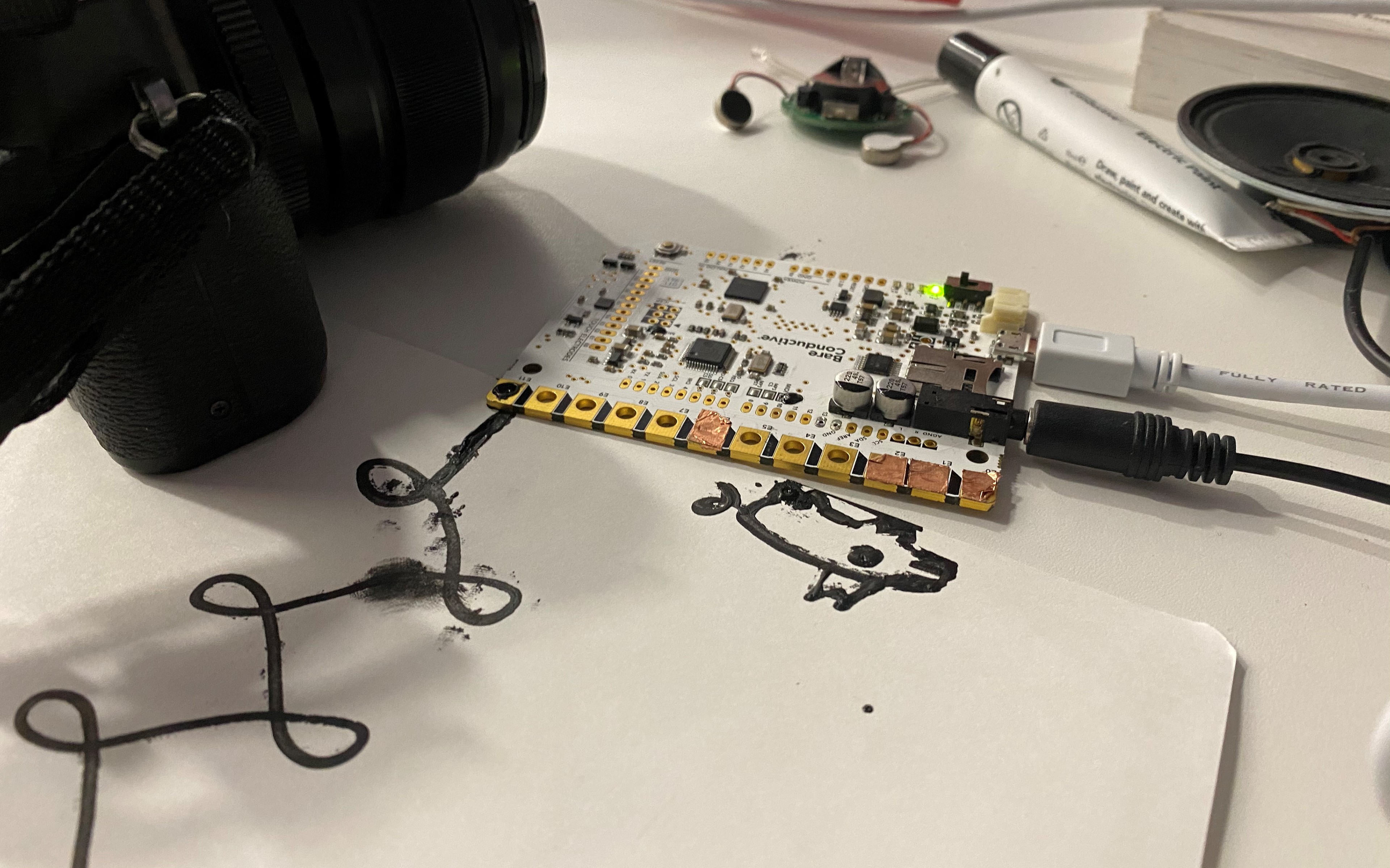


Experiments with Bare Conductive and electric paint. Photos and video taken by Kate.

Experimentation findings produced collaboratively. Diagram made by Sebastian.
PRESENTATION & FEEDBACK
This week, after presenting our progress we received a lot more useful feedback in terms of how we can progress with this project. Even though I really enjoyed figuring out the electric paint and how it might help us with the project, we were told to not get too much into technology as it is very time consuming and usually has very little effect. Instead, John suggested that we should spend next week choosing 3 different micro spaces or ideas and apply the same strategy to draw comparison and be able to choose one.



People trying out our prototype. GIFs made by Ula, video taken by David.

Video from our presentation. Taken by David, edited by Kate.
BIBLIOGRAPHY
Haverkamp, M. (2013). SYNESTHETIC DESIGN : handbook for a multi-sensory approach.
Lupton, E., Lipps, A. and Cooper-Hewitt Museum (2018). The senses : design beyond vision. New York, Ny: Copper Hewitt, Smithsonian Design Museum ; Hudson, Ny.
Lupton, E. (2017). Design is storytelling. New York, Ny: Cooper Hewitt, Smithsonian Design Museum.
7 Tension States Image:
https://cdn.buymeacoffee.com/uploads/project_updates/2021/02/5667381a00d916d907d2e9d50b8c2df9.jpg
https://cdn.buymeacoffee.com/uploads/project_updates/2021/02/5667381a00d916d907d2e9d50b8c2df9.jpg